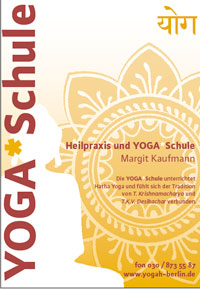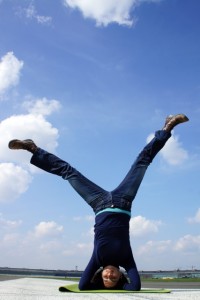
photo from Fern http://flickeflu.com/photos/36576881@N05
I had a student the other day sustain a painful injury by doing nothing. She had been having slight lower back pain for a few days and then one morning she woke up to find that she was unable to use her left leg without excruciating pain. A 33 year old woman in good overall health, there were no previous major injuries to justify this event and she hadn’t done anything recently to cause major strain other than the common psychological stresses of life. She expressed surprise, helplessness and frustration when several doctors could not find the cause. Finally a holistic chiropractic therapist figured out what was wrong and she started to improve.
The therapist suggested that my student stop doing yoga for a while, saying that it may be too strenuous for her pending recovery. But the student told me she explained that this version of yoga, Hatha Yoga, was actually very gentle and that the class was a very supportive environment for healing of all kinds. As she explained this to me she told me that she had tried many types of Yoga in her hometown of Los Angeles and that for the most part it was a flexibility contest- the winner of which inevitably wore the most trendy yoga fashion and excelled at head stands. She said that as a result of yoga in Berlin she understood that this practice wasn’t about abusing the body into meaningless contortions but more about making peace with the body and appreciating what it can do.
In some cultures “no pain, no gain” is a widespread fitness philosophy. But in many cases it gets us into the wrong frame of mind when it comes to our relationship with our bodies. The idea that if it doesn’t hurt a little you aren’t doing anything good for yourself is not only untrue but can really injure both your body and mind in the long run. It can spill into all parts of life, relationships, work etc., creating obvious dysfunction as we associate pain with something positive.
Now don’t get me wrong, growth does hurt and often we have to push past our comfort zones in order to make real progress in our development as humans. But perhaps the key is knowing yourself first- making peace with your body, mind and soul and then becoming more discerning about what kind of pain is good. The body is an amazing thing that facilitates so much for our minds and our souls and its function should never be taken for granted. What have you done lately to celebrate it?
















